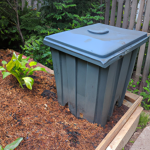
Implementing Solar Power on Your Homestead
Step-by-Step Guide
When it comes to living off the grid and being self-reliant, there is no better option than implementing solar power on your homestead. Solar power not only provides a sustainable and renewable source of energy, but it also allows you to take control of your own electricity production. Imagine the peace of mind that comes from knowing you can generate power even when the grid goes down. So, let’s dive into the step-by-step guide to implementing solar power and securing your family’s energy future.
Step 1: Assess Your Energy Needs
- Calculate your average energy consumption by reviewing your utility bills.
- Determine your daily energy requirements and consider any future expansion plans.
Step 2: Choose the Right Solar System
- Decide between grid-tied or off-grid systems based on your location and needs.
- Consider the size of your property and available space for solar panels.
- Research and select reputable solar panel manufacturers and installers.
Step 3: Site Assessment and Design
- Identify the best location on your property for maximum sun exposure.
- Ensure there are no shading obstructions from trees, buildings, or other structures.
- Work with a professional to design a system that suits your energy needs and site conditions.
Step 4: Obtain Permits and Financing
- Check with your local authorities for any permits required for solar installations.
- Research available financing options and incentives for solar power projects.
- Apply for permits and secure financing if necessary.
Step 5: Purchase and Install Equipment
- Order your solar panels, inverters, batteries, and other necessary equipment.
- Prepare the installation site by clearing any debris and ensuring a stable foundation.
- Follow the manufacturer’s instructions or hire a professional for installation.
Step 6: Connect to the Grid (if applicable)
- If you choose a grid-tied system, coordinate with your utility company for connection.
- Install a bi-directional meter to measure both incoming and outgoing electricity.
- Ensure all safety measures are in place before connecting to the grid.
Step 7: Monitor and Maintain
- Regularly monitor your solar power production and battery storage levels.
- Clean the solar panels periodically to maximize efficiency.
- Perform regular maintenance checks and address any issues promptly.
Implementing solar power on your homestead may require an initial investment, but the long-term benefits far outweigh the costs. With solar power, you can reduce your reliance on the grid, lower your electricity bills, and have a reliable source of energy even during emergencies. Take action now to secure your family’s energy future and embrace the power of self-reliance.



GIPHY App Key not set. Please check settings